Disclosure: Meeple Mountain received a free copy of this product in exchange for an honest, unbiased review. This review is not intended to be an endorsement.
Talk about an emotional journey.
I didn’t think I was itching to play a team-based, area-control, ideally four-player heavy Euro experience playing as one half of the spiritual tug-of-war of the human brain that has a 30-page rulebook and a dynamic objective scoring system with no round structure.
But, Mindclash Games has a way of proving me wrong. Cerebria: The Inside World (2018, Mindclash Games) has all of the standard lore and backstory of a Mindclash production, which is to say, the worldbuilding is excellent. In this way, even though I didn’t really want to dive into this whole brain game thing, I knew I was in good hands, but it was still tough to clear all the barriers to entry.
I tried desperately to consume the Cerebria rulebook; it’s a wordy affair, made more difficult by its embrace of such detailed terminology that leans into its world. (Essence? The Origin? Vibe tokens? Oh my goodness, there’s so much here!)
When learning a new game, I prefer to start by reading the rules, then watching a teaching video, then rereading the rulebook to do a dummy-hand play by myself. I tried to navigate the manual to complete these steps on three different occasions, but I just couldn’t get there.
But in our run-up to Gen Con 2023, I re-engaged. After doing plays of other Mindclash productions, such as Anachrony and Trickerion: Legends of Illusion, I kept returning to the pile of review copies in my game room. Cerebria was still there, staring back at me. Can I find three people to join me for four-player games of this beast? Can I teach all five of the game’s main board actions and the four upgradable player-board actions?
And all of this is only the “Basic Game” version of Cerebria?
But I got there. Join me as I describe the experience of playing Cerebria. It’s not for the weak of heart, but it is a journey worth taking.

Bliss Versus Gloom
As is my tradition in reviewing other core Mindclash Games experiences (and by that, I mean everything heavier than Astra, the first game in the Mindclash Play line of lighter experiences that hit retail last year), I’m going to skip telling you the detailed rules and stick with giving you a broad sense of play. That is because after just four plays, I’m still learning the rules myself.
This review will only cover my time at various player counts with the Basic Game because that was more than enough game for me.
At the end of the day, Cerebria is intended to be a 2v2 area control game that plays in about 90 minutes. The first big surprise is how simple that last sentence sounds: who DOESN’T want to play a short team game like that?
But it is important to cement this fact: the game wants four players at the table. While I have played it at other counts, there’s no question that you should first play Cerebria the way the designers intended. The alternatives listed in the manual offer variants: 2v1, 1v1, two-player co-op, and solo.

Players take on the role of spirits, playable characters with access to a player board listing available actions, a personal deck of multi-use cards, a standee used to navigate five different realms, and a hefty amount of tokens used to mark upgrades, spendable cash (known as Willpower), and strength on cards that mark a team’s territory (known as Essence).
Cerebria is a game, and since it’s a game there are victory points, and those victory points determine the winning team. There’s a big, admittedly phallic-looking structure that will be built in the middle of the board called The Identity. The Identity is built on the Origin, which sits in the middle of the five realms with names such as the Willow of Values and the Cradle of Senses.
I know, I know…it’s a lot.
A bit like the game Tabannusi: Builders of Ur, a traditional round structure is non-existent in Cerebria. Players take turns trying to establish strength on Emotion cards placed into each Realm to establish a majority. Other available actions include gathering more Willpower, placing or removing Emotion cards, building Fortresses in a Realm to provide additional strength, and market exchanges where a player can gather more cards.
After even a single play, the noise around the rules of Cerebria quiets down substantially. The beauty of the gameplay comes from the myriad strategies a player has access to during their three-action turn. I would never call Cerebria easy to learn, but I was really surprised how intuitive the game became after realizing that it pushes players to go for broke on every turn.
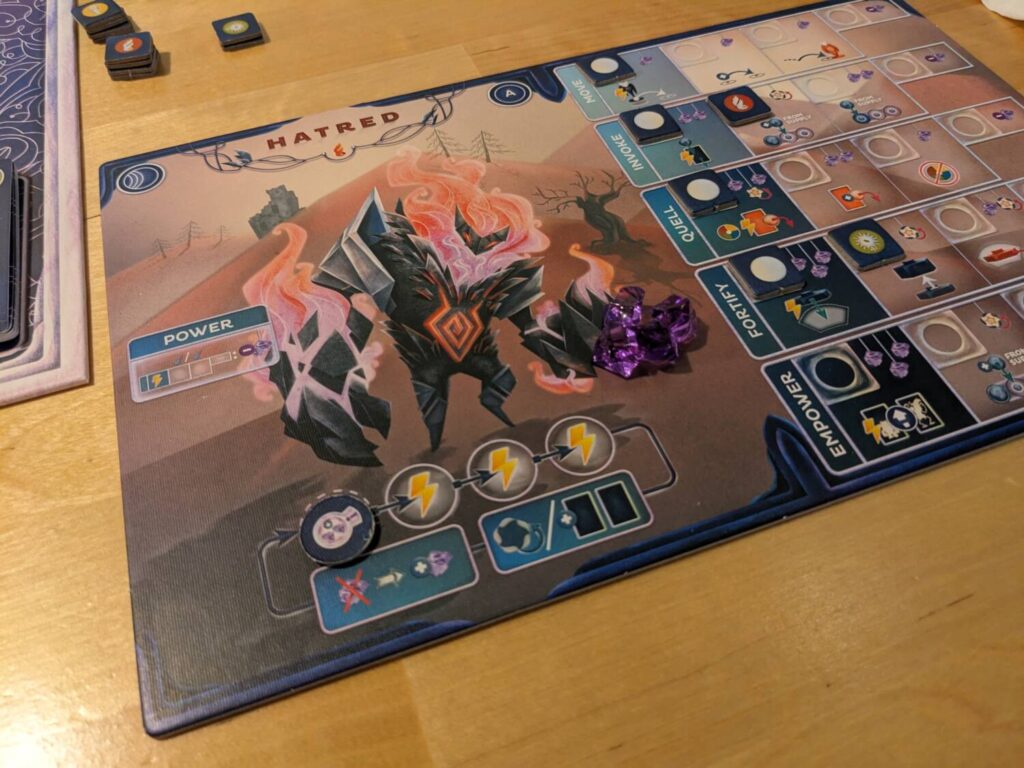
The Team Play’s the Thing
Hegemony: Lead Your Class to Victory is still my favorite experience of 2023. That’s because there is so much shouting, so much negotiating, so much interaction.
Cerebria has shouting in spades, too. Well, it does if you have a full four-player count.
Working with your teammate is vital, because here’s how scoring really works: there are buckets of Willpower in the Origin area at the center of the board. When a bucket empties, a scoring takes place. There are seven public milestones known as Aspirations in the Basic Game. In each round, each team has these same seven public Aspirations in a private deck. Each team has a private Aspiration that must be one of the six Aspirations not currently serving as the public Aspiration, so that everyone is chasing something but competitors are not specifically sure which Aspiration the other is currently working on. (I know, it’s a lot, right?)
Watching that process play out is fantastic. In a sample round, let’s say the Aspiration of Attitude is the public goal: whoever has control of more Realms will score that goal. Bliss might be working towards the Aspiration of Versatility—having more suits of Emotion cards on the board than the other team. Gloom has a different Aspiration that they are working on.
It’s hard to know how to defend the other team, then. What if both teams currently have the same private goal? If a team achieves both the public and private goals, they score five points by placing a “Major Fragment” in the central tower. Doing that even twice during the game could seal the deal.
So in this short, complicated area control game, you’re trying to make optimal moves (it’s a Euro), but you are also desperately trying to score anything, any time there’s a scoring phase. This combination leads to real stress; my favorite experiences always feature tough choices, and Cerebria has them in spades.
An example. It was mid-game in my first three-player game of Cerebria, and the opposing player had us over a barrel: he was about to score both the public milestone and what our team guessed was his private milestone on his next turn. My teammate and I argued over what to do: do we try to level ourselves against the public milestone—meaning that in a tied area control situation, no one scores—or put the Origin wheel in position for us to score a Fortress segment and let our opponent score the full five points for completing both the public and their private goals?
We analyzed the situation: if we gave up the big one, we’d still score something for the Fortress segment, and in 2-3 more turns we could end the game because we would be out of pieces to place on the central tower. It was a risk, and we had to hope our opponent didn’t draw another private goal that lined up closely with the current state of the board.
I found that almost every turn in Cerebria has pulpy drama on tap. I think I only took seven, maybe eight, turns in one of my games. Each turn was really something, thanks to the stakes. In a game where you might win 17-15, every point counts.
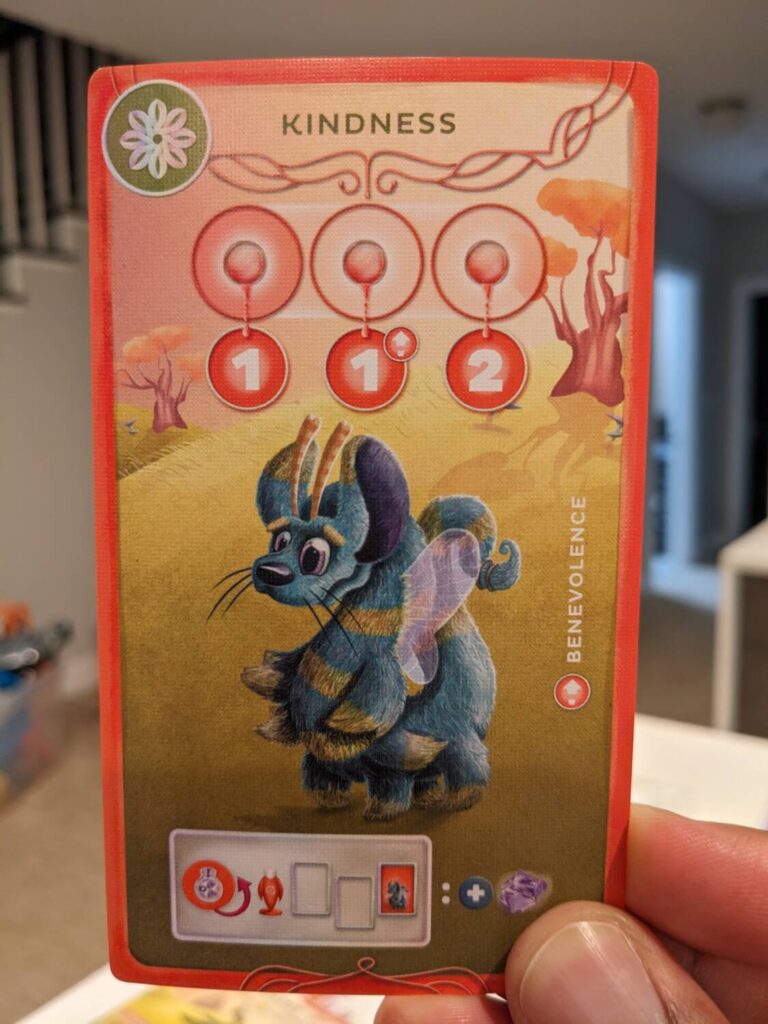
The Emotional Weight
Cerebria is a game I didn’t think would land with me…and I was wrong. As long as you can get a full player count game, or even a 2v1 game lined up, I think Cerebria is a very safe recommendation. The design work here by Mindclash CEO Viktor Peter, Richard Amann, István Pócsi, and Frigyes Schoberl is interesting, and it feels like a game separate from the other games Mindclash had produced to that point. The tug-of-war nature of the scoring is complicated, thrilling, and my sense is that each game will play out differently because of where teams begin play and which Emotion cards they are holding.
The teach of this beast is a lot even for a gamer. The rulebook doesn’t do Cerebria any favors thanks to the lexicon. Even watching the teach video for Cerebria took multiple views to absorb everything needed to play. I haven’t even attempted the advanced game because the basic game is so good, but just looking at the player aid for the powers on the Emotion cards in the advanced game made me sweat.
On BGG, the weight for Cerebria is 4.34 out of 5.00. That feels about right, because of the mastery required to understand the consequences of each decision. You really can’t afford to take a turn off in such a short experience, particularly one that might score multiple public milestones in between your turns. That’s right—you might take a turn and watch one, maybe two, scoring rounds happen before you go again, and that might win or lose your team the game.
The production here is beautiful. Artists Villo Farkas, Toby Allen, Jamie Sichel and Pedro A. Alberto have collectively created a masterclass for the term “beautifully weird tabletop game.” All of the playable spirits, all of the non-playable Emotions on the cards, the board, the box…wow. One of my plays took place at Stay and Play Cafe in Chicago, and people kept stopping and staring at the table presence as they strolled by.
Production is obviously important to the Mindclash team and it shows once again here. My main negative: the iconography. It’s not intuitive. That means you will have to regularly reference the rules and the player aid…which there aren’t enough of. The powers on the Emotion cards often use an icon that only appears on that card or maybe one other card, leaving inexperienced players scrambling to understand what they can and can’t do.
I now see why Cerebria is such a hit with its fans, and I can also sense why some people never got into it. Although it’s a different type of game, the team-based nature of La Famiglia: The Great Mafia War worked well for me also, in a package that was very much hit or miss depending on how much interaction you like in a game that is required to be a team-based experience.
The Basic Game format of Cerebria is plenty for me, though. Cerebria is a tough game to get to the table, but I’m looking forward to continued exploration of the strategies in this one.


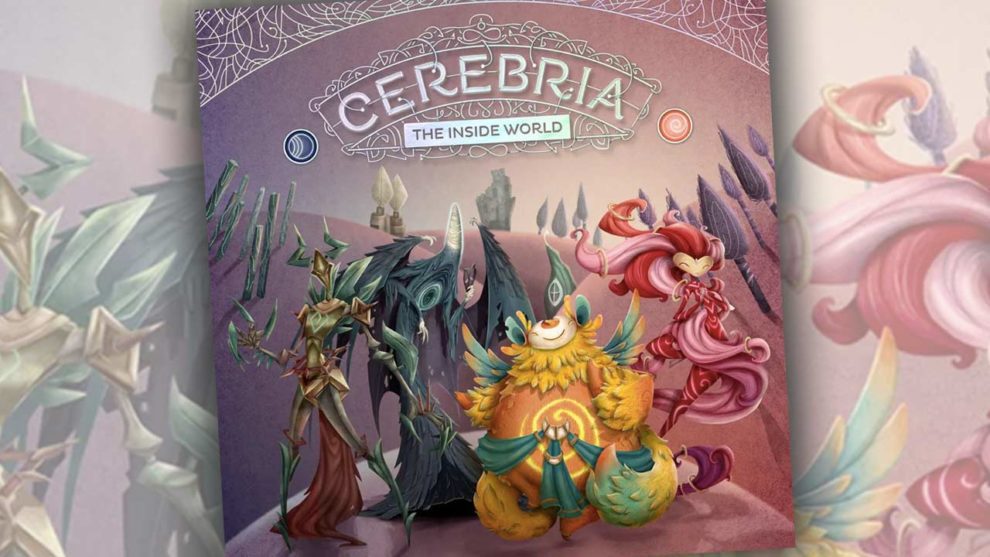
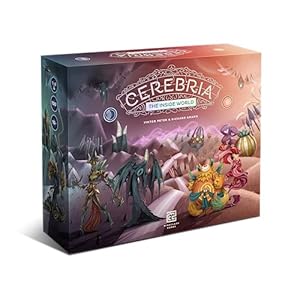
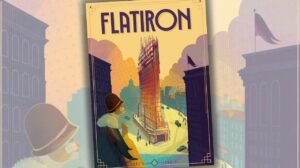


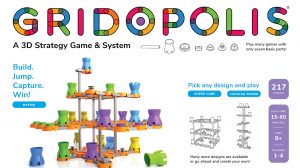




Add Comment